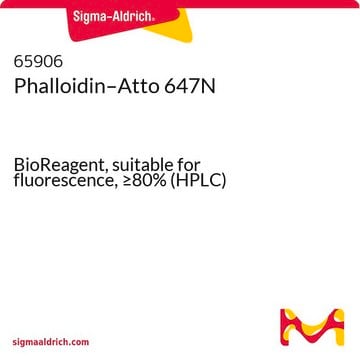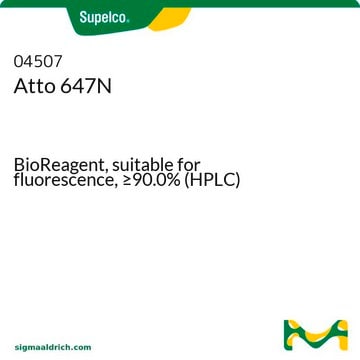94072
Phalloidin–Atto 565
suitable for fluorescence, ≥80.0% (HPLC)
About This Item
Produits recommandés
Pureté
≥80.0% (HPLC)
Forme
solid
Poids mol.
Mw 1394 g/mol
Fabricant/nom de marque
ATTO-TEC GmbH
λ
in methanol
Absorption UV
λ: 562.0-568.0 nm Amax
Adéquation
suitable for fluorescence
Température de stockage
−20°C
Catégories apparentées
Description générale
find more information here
Code de la classe de stockage
11 - Combustible Solids
Classe de danger pour l'eau (WGK)
WGK 3
Point d'éclair (°F)
Not applicable
Point d'éclair (°C)
Not applicable
Certificats d'analyse (COA)
Recherchez un Certificats d'analyse (COA) en saisissant le numéro de lot du produit. Les numéros de lot figurent sur l'étiquette du produit après les mots "Lot" ou "Batch".
Déjà en possession de ce produit ?
Retrouvez la documentation relative aux produits que vous avez récemment achetés dans la Bibliothèque de documents.
Les clients ont également consulté
Articles
Atto dyes are a series of fluorescent dyes that meet the critical needs of modern fluorescent technologies.
Notre équipe de scientifiques dispose d'une expérience dans tous les secteurs de la recherche, notamment en sciences de la vie, science des matériaux, synthèse chimique, chromatographie, analyse et dans de nombreux autres domaines..
Contacter notre Service technique






